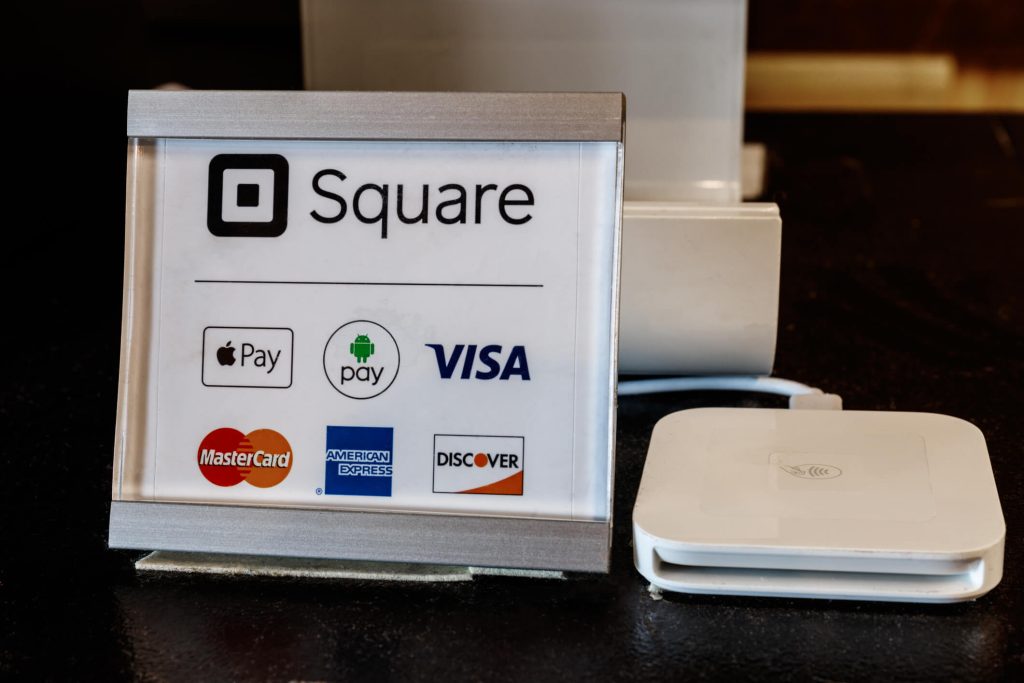
By alphacardprocess May 12, 2024
To accept payments online without a merchant account, businesses and individuals can leverage various alternatives that offer simplicity, flexibility, and broader access to diverse payment methods. This guide will explore the different options available, detailing how they work and how you can integrate them into your business operations.
Understanding the Importance of Accepting Payments Online
Accepting payments online offers numerous benefits for businesses. Firstly, it provides convenience for customers, allowing them to make purchases from the comfort of their own homes or on the go. This convenience can lead to increased sales and customer satisfaction. Additionally, accepting payments online opens up opportunities for businesses to reach a global customer base, expanding their market reach and potential for growth. Furthermore, online payments are often faster and more efficient than traditional payment methods, reducing administrative tasks and improving cash flow for businesses.
What is a Merchant Account and Why You Might Not Need One
A merchant account is a specialized type of bank account designed specifically for businesses to accept and process electronic payment card transactions. Understanding what a merchant account is, how it operates, and why it might not be necessary for all business types can help you make more informed decisions regarding your business’s financial arrangements.
What is a Merchant Account?
A merchant account is an intermediary between your business bank account, your customers’ payment methods (like credit or debit cards), and the payment networks that move the money. When a customer pays for a service or product with a credit or debit card, the funds are first processed through a merchant account before being transferred to your business bank account. This process involves several key players, including the merchant bank (or acquirer), the card issuer, and the payment processor.
How Does a Merchant Account Work?
When a transaction is made:
- Authorization: The payment gateway sends the card details to the payment processor, which seeks authorization from the card network and issuing bank.
- Batching: Authorized transactions are stored in “batches” and sent for settlement at the end of the business day.
- Funding: After settlement, the funds are deposited into the merchant account. From there, they are transferred to the business’s bank account, typically within one to two business days.
Why You Might Not Need a Merchant Account
- Low Volume of Transactions: If your business handles a very low volume of transactions, the fees associated with a merchant account might outweigh the benefits.
- Small-Scale or Seasonal Business: Small-scale or seasonal businesses might find the fixed costs associated with merchant accounts impractical.
- Alternative Payment Solutions: With the rise of digital payment platforms like PayPal, Stripe, and Square, many businesses can process payments without setting up a traditional merchant account. These services act as both the payment processor and the merchant account, simplifying the setup and often offering more transparent fee structures.
- Cost Efficiency: Alternative payment solutions often provide a more cost-effective model for small businesses. They usually charge per transaction without the monthly fees and long-term contracts associated with traditional merchant accounts.
Alternative Payment Solutions for Accepting Payments Online
Creating a comprehensive system for accepting online payments is crucial for businesses aiming to thrive in the digital marketplace. With the rise of e-commerce, customers expect a seamless and secure checkout experience. Here’s a look at some innovative alternative payment solutions that can help businesses meet these expectations and cater to a wider audience.
PayPal

PayPal is one of the most widely recognized and trusted payment gateways in the world. It allows businesses to accept payments from customers with or without a PayPal account. PayPal offers a seamless checkout experience, with options for customers to pay using their PayPal balance, credit or debit cards, or even through financing options. Setting up a PayPal account is relatively easy, and businesses can integrate PayPal into their website or e-commerce platform using plugins or APIs.
Stripe

Stripe is another popular payment gateway that offers a range of features and functionalities for businesses. It allows businesses to accept payments from customers worldwide, supporting multiple currencies and payment methods. Stripe also provides robust security measures to protect customer data and prevent fraud. With its user-friendly interface and extensive documentation, integrating Stripe into a website or e-commerce platform is straightforward.
Square

Square is a payment solution that specifically caters to small businesses. It offers a range of tools and services, including a point-of-sale system, online payment processing, and even business loans. Square’s payment gateway is easy to set up and use, making it an ideal choice for businesses that are new to accepting payments online. Additionally, Square provides detailed analytics and reporting features, allowing businesses to track and manage their online payments effectively.
Google Pay
Google Pay is a payment solution developed by Google that allows businesses to accept payments online seamlessly. It integrates with various Google services, such as Google Ads and Google Analytics, providing businesses with a comprehensive view of their online transactions. Google Pay supports multiple payment methods, including credit and debit cards, as well as digital wallets. Integrating Google Pay into a website or e-commerce platform can be done through APIs or plugins.
Amazon Pay
For businesses operating in the e-commerce space, Amazon Pay offers a convenient and trusted payment solution. With Amazon Pay, customers can use their Amazon accounts to make purchases on external websites. This eliminates the need for customers to enter their payment and shipping information repeatedly, streamlining the checkout process. Integrating Amazon Pay into a website or e-commerce platform can be done through APIs or plugins, and businesses can leverage Amazon’s extensive customer base to drive sales.
Cryptocurrencies
Cryptocurrencies, such as Bitcoin and Ethereum, have gained significant popularity in recent years. They offer a decentralized and secure method of accepting payments online. By accepting cryptocurrencies, businesses can tap into a growing market of tech-savvy customers who prefer to use digital currencies. Integrating cryptocurrency payment options into a website or e-commerce platform can be done through specialized payment gateways or plugins.
Setting Up an Online Payment System without a Merchant Account
Now that we have explored various alternative payment solutions, let’s discuss how to set up an online payment system without a merchant account.
Integrating Payment Gateways into Your Website or E-commerce Platform
To accept payments online without a merchant account, businesses need to integrate payment gateways into their website or e-commerce platform. Most payment gateways provide plugins or APIs that allow businesses to seamlessly integrate their services. These plugins or APIs typically provide step-by-step instructions on how to integrate the payment gateway into the website or e-commerce platform. It is essential to follow these instructions carefully to ensure a smooth and secure payment process for customers.
Ensuring Security and Compliance in Online Payment Processing
When accepting payments online, security and compliance should be top priorities for businesses. It is crucial to choose payment gateways that offer robust security measures, such as encryption and fraud detection. Additionally, businesses should comply with relevant data protection and privacy regulations, such as the General Data Protection Regulation (GDPR) in the European Union. Implementing secure payment processing protocols and regularly updating security measures will help protect customer data and build trust with customers.
Exploring Third-Party Payment Processors
Third-party payment processors act as intermediaries between the customer, the business, and the customer’s bank. They handle the entire payment process, including authorization, settlement, and security. One of the most well-known third-party payment processors is PayPal. PayPal allows businesses to accept payments from customers with or without a PayPal account, making it a versatile option. It offers a range of features such as invoicing, recurring payments, and international transactions. Another popular third-party payment processor is Stripe, which provides businesses with a customizable and seamless payment integration experience. Stripe supports a wide range of payment methods and offers advanced fraud prevention tools.
Setting Up a PayPal Business Account for Online Payments
Setting up a PayPal business account is a straightforward process that can be completed in a few simple steps. First, you need to visit the PayPal website and click on the “Sign Up” button. From there, you will be prompted to choose between a personal or business account. Select the business account option and provide the necessary information such as your business name, contact details, and bank account information. Once your account is set up, you can start accepting online payments by integrating PayPal into your website or e-commerce platform.
Utilizing Stripe for Seamless Online Payment Integration
Stripe offers a seamless payment integration experience that allows businesses to accept online payments with ease. To get started with Stripe, you need to sign up for an account on their website. Once your account is set up, you can access the Stripe dashboard, where you can customize your payment settings, set up recurring payments, and manage your transactions. Stripe provides businesses with a range of integration options, including plugins for popular e-commerce platforms such as Shopify and WooCommerce.
Accepting Payments with Square: A Convenient Option for Small Businesses
Square is a popular payment solution that offers a range of tools and services for small businesses. In addition to accepting online payments, Square also provides businesses with the ability to accept in-person payments through their point-of-sale (POS) system. To start accepting online payments with Square, you need to sign up for a Square account and link it to your bank account. Once your account is set up, you can integrate Square into your website or e-commerce platform using their developer tools or pre-built plugins.
Integrating Payment Gateways into Your Website or E-commerce Platform
Integrating payment gateways into your website or e-commerce platform is essential for accepting online payments. Payment gateways act as a bridge between your website and the payment processor, securely transmitting customer payment information. Most payment processors, including PayPal, Stripe, and Square, provide businesses with easy-to-use integration options. These options typically involve copying and pasting a few lines of code into your website’s HTML or using pre-built plugins for popular e-commerce platforms.
Ensuring Security and Fraud Prevention in Online Payment Transactions
Security is a top concern when it comes to accepting online payments. To protect customer data and prevent fraud, businesses should implement robust security measures. This includes using secure payment gateways, encrypting customer data, and complying with industry standards such as the Payment Card Industry Data Security Standard (PCI DSS). Additionally, businesses should regularly monitor transactions for suspicious activity and implement fraud prevention tools provided by their chosen payment processor.
Optimizing the Checkout Experience for Higher Conversion Rates
The checkout experience plays a crucial role in determining whether a customer completes a purchase or abandons their cart. To optimize the checkout experience and increase conversion rates, businesses should focus on simplicity, speed, and trust. This includes minimizing the number of steps required to complete a purchase, offering multiple payment options, and displaying trust signals such as security badges and customer reviews. Additionally, businesses should regularly test and optimize their checkout process to identify and address any potential pain points.
FAQs:
Q.1: Can I accept online payments without a merchant account?
Yes, there are alternative payment solutions available that allow businesses to accept online payments without the need for a traditional merchant account. Third-party payment processors such as PayPal, Stripe, and Square offer streamlined and cost-effective options for accepting online payments.
Q.2: What are the advantages of using third-party payment processors?
Third-party payment processors offer several advantages, including lower setup fees, monthly fees, and transaction fees compared to traditional merchant accounts. They also provide businesses with a range of features and tools for managing payments, such as invoicing, recurring payments, and fraud prevention.
Q.3: How do I set up a PayPal business account?
Setting up a PayPal business account is a simple process that involves visiting the PayPal website, clicking on the “Sign Up” button, and providing the necessary information. Once your account is set up, you can start accepting online payments by integrating PayPal into your website or e-commerce platform.
Q.4: Is Stripe suitable for international transactions?
Yes, Stripe supports international transactions and offers businesses the ability to accept payments from customers around the world. It supports multiple currencies and provides businesses with advanced fraud prevention tools.
Q.5: Can I use Square for in-person payments as well?
Yes, Square offers a range of tools and services for accepting in-person payments through their point-of-sale (POS) system. This makes it a convenient option for small businesses that operate both online and offline.
Q.6: How do I integrate payment gateways into my website?
Integrating payment gateways into your website or e-commerce platform can be done by copying and pasting a few lines of code provided by your chosen payment processor. Alternatively, you can use pre-built plugins or extensions for popular e-commerce platforms.
Q.7: What security measures should I implement to protect customer data?
To protect customer data, businesses should use secure payment gateways, encrypt customer information, and comply with industry standards such as the Payment Card Industry Data Security Standard (PCI DSS). Regular monitoring of transactions for suspicious activity and implementing fraud prevention tools are also recommended.
Q.8: How can I optimize the checkout process to increase sales?
To optimize the checkout process, businesses should focus on simplicity, speed, and trust. This includes minimizing the number of steps required to complete a purchase, offering multiple payment options, and displaying trust signals such as security badges and customer reviews. Regular testing and optimization of the checkout process are also important to identify and address any potential pain points.
Conclusion
In conclusion, accepting payments online without a merchant account is not only possible but also increasingly popular among businesses of all sizes. By exploring alternative payment solutions such as third-party payment processors like PayPal, Stripe, and Square, you can easily integrate secure and convenient payment options into your website or e-commerce platform. Additionally, understanding the importance of security measures and optimizing the checkout experience can help boost customer trust and increase conversion rates. With the information provided in this guide, you are now equipped to make informed decisions and successfully accept online payments without the need for a traditional merchant account.
